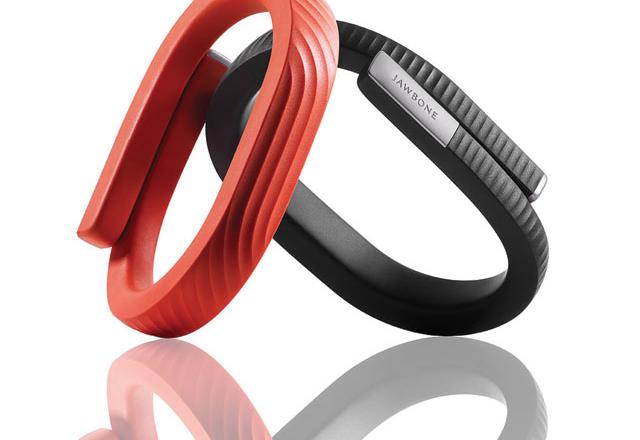You are here
Internet trend puts users centre stage
By AFP - Dec 14,2014 - Last updated at Dec 14,2014

SAN FRANCISCO — Sensors that track steps, pulse, diet and more marked a wearable computing fashion trend this year as they evolve from measuring what we’ve done to telling us what to do.
Smart bracelets, watches, and pendants increasingly adorned the techno-chic, and for some even their dogs sported medallions tracking whether they nap too much and run too little.
Data gathered by sensors is fed to
smartphones or tablets, where applications figure out how people or their pets are doing when it comes to fit lifestyles.
A nascent “quantified self” movement that picked up pace this year is expected to bolt ahead in 2015, with a boost from the launch of an Apple Watch tuned for fitness and much more.
“We do tend to get a little more excited about stuff that is all about us,” said analyst Rob Enderle of Enderle Group in Silicon Valley.
Sensors in things we wear allow automated observations about daily activities to be scrutinised by computers in online data centres, which may one day be able to anticipate people’s needs.
Industry trackers note that many people who bought fitness bands tended to abandon them, perhaps because the pure novelty of comparing step counts with friends wears off.
“Consumers are not about tracking data,” said Forrester analyst J.P. Gownder.
“What they need is insight how to live a better life.”
Computer love
By tapping into
smartphone features such as e-mail, calendars and location tracking, servers on the Internet can put the quantified self into context, such as what someone might like when they are at a particular place at a certain time of day.
“By the end of the decade you will be talking to whatever device is connected to you, and it will talk to you,” Enderle said.
“Whether you want to get married to it is another thing and speaks to a mental condition.”
The analyst’s quip played off of hit film “Her”, in which Joaquin Phoenix portrays a character in a future time who falls in love with a computer operating system that understands him better than do people in his life.
A “killer application” for wearable computing would be going beyond measuring activities to pumping insights to predictive personal assistants that are linked via the Internet to controls for things such as lights, televisions, and thermostats, according to NPD Group analyst Ben Arnold.
“Say it is 9:00am and I am talking with a friend about how much I like barbecue [food],” Arnold said.
“Then my smartwatch at noon knows I am thinking about lunch and recommends a barbecue place nearby, because it heard the conversation in the morning. That is the goal.”
Google could hit the mark first due to its Deep Mind project devoted to getting machines to think the way people do, the analyst reasoned.
Google Now software designed to anticipate what users of Android mobile devices might want already does things such as notice someone has a flight confirmation e-mail and then alert them regarding the best time to leave for the airport based on real-time traffic conditions.
Apple has its Siri virtual assistant on iPhones, and Microsoft has Cortana to help on Windows mobile phones.
A recent Apple alliance with IBM hints that artificial intelligence prowess from Watson might be used to enhance Siri.
Fitness bands squeezed
In the short term, pressure is on smart accessories such as FitBit and UP bands that pioneered the quantified self-trend by tracking steps, sleep, and meals.
“We are at a moment of great creative destruction,” Gownder said of the trend.
“Eighty per cent of what you are seeing today will probably fail in some fashion, and that is okay.”
Forrester research shows that interest in wearing sensors, particularly on wrists, has jumped in the past year.
Smartwatches have been released by titans such as Samsung, Sony, LG, Motorola and Microsoft. Features go beyond fitness tracking to letting wearers make calls, check e-mail, take photos, interact with apps on smartphones, and more.
“The value becomes helping me use the data as opposed to helping me get the data,” NPD analyst Arnold said.
Apple Watch boost
The release next year of an Apple Watch is expected to push smartwatches into mainstream culture with the power of the Apple brand.
“There is no doubt in my mind that people will be lined up around the block to buy Apple Watch,” Arnold said.
“The market radically changes when Apple gets in; it grows. And, maybe to an extent it raises all boats.”
Apple Watch will be woven into the California company’s Web of gadgets and services, opening the potential for the wrist-worn device to be used for tasks such as controlling Apple TV or unlocking smart door locks synched to iPhone apps.
Once information about, and tailored for, people is on their wrists, a natural next move is to put it in front of their eyes with Internet-linked eyewear such as Google Glass, according to Arnold.
“I’m just not sure the world is ready for Google Glass, but it is a logical next step,” the analyst said.
Related Articles
On the one hand, or wrist, there may be an eye-catching Apple Watch, while the other will sport with more discreet jewellery packed with Internet Age smarts.
Microsoft plans to weigh into the wearable computing market with a smartwatch, Forbes reported Thursday.
To observers of the secretive Swiss watch industry, its quiet, seemingly passive response to Apple Inc.’s plan to attack their centuries-old business could be mistaken for submission before an overwhelming adversary.



















